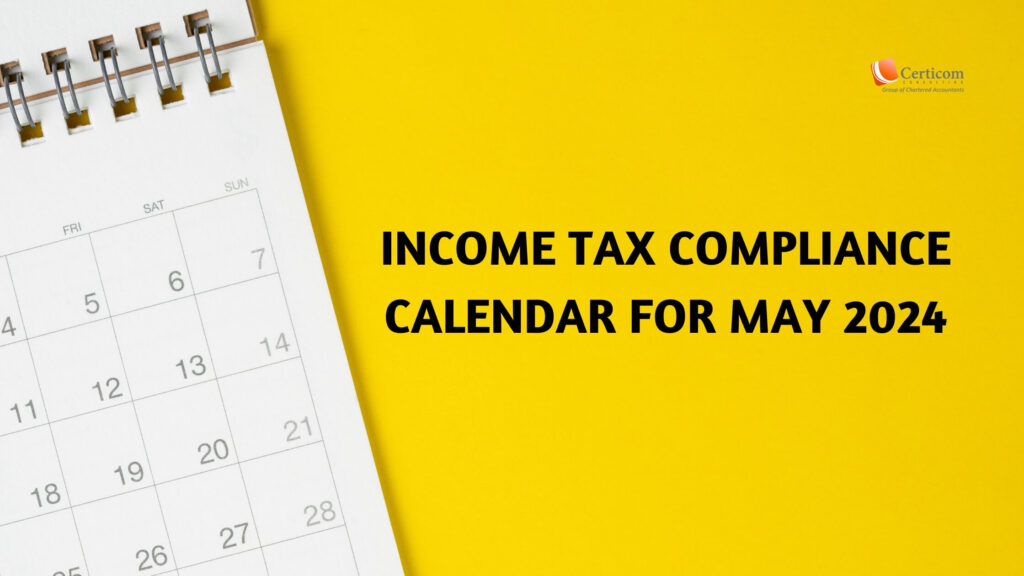- Have any questions?
Key Income Tax Regulations Every Salaried Individual Should Be Aware of as the FY 2024-25
As the new financial year begins on April 1st, it’s crucial to understand the accurate income tax regulations to effectively plan taxes and make appropriate investments for the current fiscal year.

On April 1st, a new financial year typically begins, signaling the activation of numerous income tax regulations (unless specified otherwise). While income tax rules are often unveiled during the Union Budget or mid-fiscal year, they generally take effect at the start of the new financial year. For FY 2024-25, the government made no alterations to the income tax laws during the interim budget. Consequently, all income tax rules from the preceding financial year persist.
Selecting Between Old And New Tax Regimes
When it comes to Tax Deducted at Source (TDS) on salary, employees must decide between the old and new tax regimes. It’s important to note that the new tax regime is the default option. If you do not inform your employer of your choice for the old tax regime, they will deduct tax from your salary based on the new regime. Make sure to communicate your preference as soon as your employer requests it.
Basic Exemption Thresholds In Old And New Tax Regimes
There exists a variance in the basic exemption threshold between the old and new tax regimes. If an individual’s income falls below the basic exemption threshold in a fiscal year, their income is exempt from taxation. Presently, under the new tax system, income up to Rs 3 lakh is tax-exempt, applicable to all individuals opting for this regime regardless of age. In contrast, under the old tax system, the basic exemption threshold varies based on the individual’s age. For those below 60 years, income up to Rs 2.5 lakh is tax-exempt annually. For senior citizens aged between 60 and 80 years, the exemption limit is Rs 3 lakh annually. Super senior citizens aged 80 years and above enjoy an exemption of up to Rs 5 lakh annually.
Income tax slabs under new tax regime
Income range (In Rs) | Income tax rate (%) |
0-3,00,000 | 0 |
3,00,001-6,00,000 | 5 |
6,00,001-9,00,000 | 10 |
9,00,001-12,00,000 | 15 |
12,00,001-15,00,000 | 20 |
15,00,001 and above | 30 |

Income tax slabs under old tax regime
Income range (In Rs) | Income tax rate (%) |
0-2,50,000 | 0 |
2,50,001-5,00,000 | 5 |
5,00,001-10,00,000 | 20 |
10,00,001 and above | 30 |
No Tax Liability In Old And New Tax Regimes
Income tax regulations provide tax rebates to resident individuals in both tax regimes. Tax rebate, accessible under Section 87A, eliminates tax liabilities if the net taxable income remains below the specified threshold. The new tax system provides a greater tax rebate compared to the traditional one.
Under the new tax regime, a tax rebate of up to Rs 25,000 is available, resulting in zero tax payable for incomes up to Rs 7 lakh. Conversely, the old tax regime offers a tax rebate of up to Rs 12,500, resulting in zero tax payable for net taxable incomes up to Rs 5 lakh.
Available Deductions And Tax Exemptions
Both tax regimes provide various deductions and exemptions, but the old tax regime offers a broader range compared to the new tax regime. Examples of available deductions include Section 80C, allowing deductions up to Rs 1.5 lakh for specified investments and expenses; Section 80D for health insurance premium payments; Section 80CCD (1B) for additional investments in the National Pension System (NPS) up to Rs 50,000. Individuals can also claim deductions for interest paid on home loans up to Rs 2 lakh, education loan interest, and charitable donations. Additionally, individuals can avail tax exemptions on house rent allowance (HRA) and leave travel allowance (LTA).
Under the new tax regime, individuals are entitled to only two deductions: a standard deduction of Rs 50,000 from salary and pension income, and Section 80CCD (2) deduction for employer contributions to the NPS account. Family pensioners also qualify for a standard deduction of Rs 15,000 in the new tax regime. These deductions are similarly accessible under the old tax regime.
By availing these eligible deductions, individuals can lower their net taxable income and consequently their tax liability, contingent upon the chosen tax regime.

Ensure Timely ITR Filing to Avail Benefits of the Old Tax Regime
If you intend to select the old tax regime when filing your income tax return this year, it’s crucial to submit your ITR before the July 31 deadline. This is essential because the new tax regime is automatically applied by default, and income tax regulations permit individuals to opt for the old tax regime only if they file their ITR on time. If an individual files a delayed ITR (between August 1 and December 31), tax liability will be computed solely based on the new tax regime.
Surcharge Reduction in the New Tax Regime
Under the new tax regime, high-income earners opting for it will face a decreased surcharge rate. The rate has been lowered from 37% to 25% for incomes exceeding Rs 5 crore. Conversely, opting for the old tax regime would subject the individual to a surcharge rate of 37%.
Related Post
Find the Suitable Income Tax Return Form for Filing Your Returns Here
Income tax compliance calendar for May 2024
Book A One To One Consultation Now For FREE
How can we help? *




